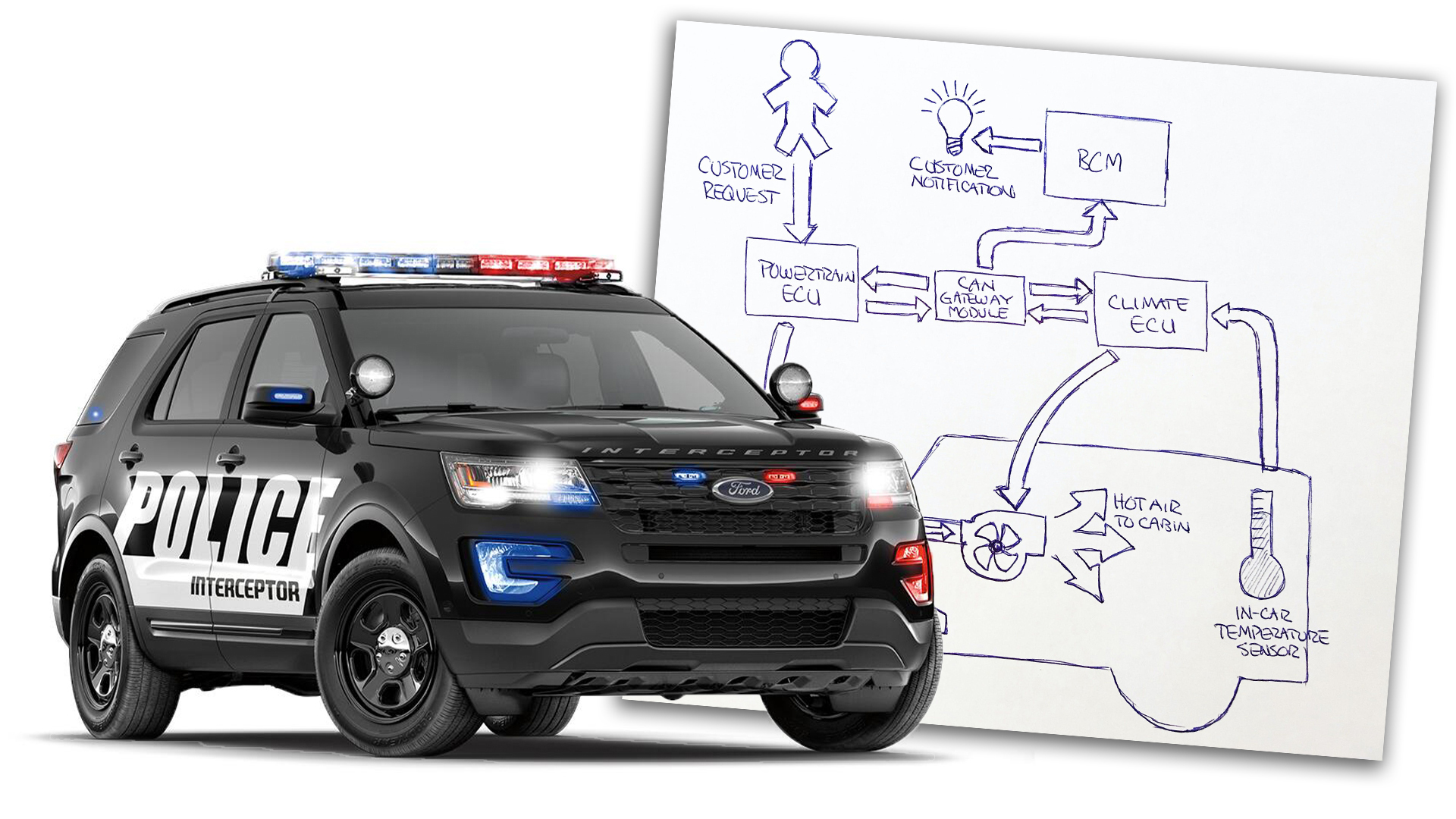

Automakers have been playing a huge role in keeping the community safe during the ongoing coronavirus pandemic. From manufacturing personal protective equipment to life-saving ventilators, the supply chain and production line aspect have proven to be crucial to fulfill America’s needs during this trying time. Now, Ford is using the lessons it has learned over the past several months to help improve its vehicles for first responders, including an all-new update to its Police Interceptor Utility vehicles to bake away viruses in the cabin.
Yes, bake.
In late March, Ford engineers came up with an idea to help sanitize and neutralize the spread of COVID-19 inside of its vehicles by way of heat. The team of engineers then worked with Ohio State University to determine the optimal temperature which is needed to reduce the viral concentration inside of the cabin and designed a process to easily complete the task.

After exiting the vehicle and ensuring that it’s clear of occupants, the officer can initiate an “Interior Cabin Heat Soak.” For vehicles model year 2016 and newer, the sanitization process is triggered after an officer presses the cruise control buttons in a specific sequence. Older Police Interceptors will need to utilize an external tool that connects to the vehicle’s OBDII port.
Once initiated, the process displays a notification on the dashboard and flashes the vehicle’s lights in a pre-set pattern to notify those nearby that the sanitation process has begun. The vehicle then revs its engine and pumps hot coolant into its heater core, eventually overheating the interior to a staggering 133 degrees Fahrenheit for 15 minutes. Once that’s finished, the vehicle then initiates a cool-down process and flashes its lights one last time to indicate completion. Ford says that using this method, officers are able to neutralize 99 percent of viral contaminates in crevices and hard-to-reach areas without using additional chemical treatments.
After working with six police departments across the nation to pilot the solution, including the New York City and Los Angeles police departments, Ford has officially released the new sanitation process as a software update available to all 2013-2019 Police Interceptor Utility customers in the U.S., Canada, and other customers around the globe. Large fleet customers can install the update using their own diagnostic tools, while smaller departments can work with local Ford dealers to complete the update.
This approach is certainly different than Honda’s measures for its Odyssey, which utilizes pressure zones in the cabin to keep the driver and front-seat passenger safe. However, it’s reassuring to know that other automakers are working to keep front line responders safe.
Got a tip? Send us a note: tips@thedrive.com